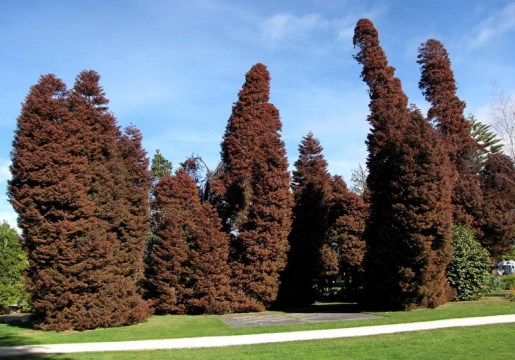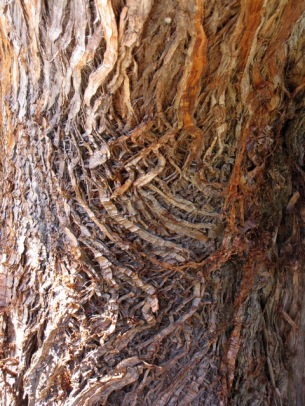Mostly I see Cryptomeria japonica ‘Elegans’ (Japanese plume cedar) planted individually – there’s even one at the end of my street I realised the other day – but there’s a group planting in the grounds of Government Gardens in Rotorua that was the first to catch my eye.
I had parked nearby and wondered both at the unusual shape of the trees and their mahogany-purple colour. Could it be a reaction to the sulphur-ish air and ground?
Well, no. The trees were wearing their winter coats (in summer the soft foliage is a blue-green). Now that I know what to look for – they have quite a distinctive growing shape – I’m beginning to see them when they’re ‘just’ green too. The winter colour is so unusual that it makes them a magnificent specimen tree.
The Great Plant Picks website says the juvenile foliage, which the tree retains all its life, is more needle-like and softer, giving the tree its common name of plume cedar and that the cultivar ‘Elegans’ was introduced to the US from Japan in the mid-1800s.
It can apparently be successfully grown in a pot, and there’s also a smaller-growing, more pendulous form – Cryptomeria japonica ‘Sekkan-sugi’ – that has cream-tipped green foliage that turns almost white in winter.
Cryptomeria japonica proper is the national tree of Japan and often planted in numbers around temples and shrines (and don’t change colour). In 2012 I was driven along part of the 35km Cedar Avenue of Nikko, lined on both sides by 13,000 Japanese red cedar, some of them original to the planting 400 years ago, although they are replaced as they’re lost.
Read an article about C. japonica being used for shelterbelt/plantation trees in New Zealand. They’ve all been cloned from one tree and registered as C. japonica ‘Egmont’.


